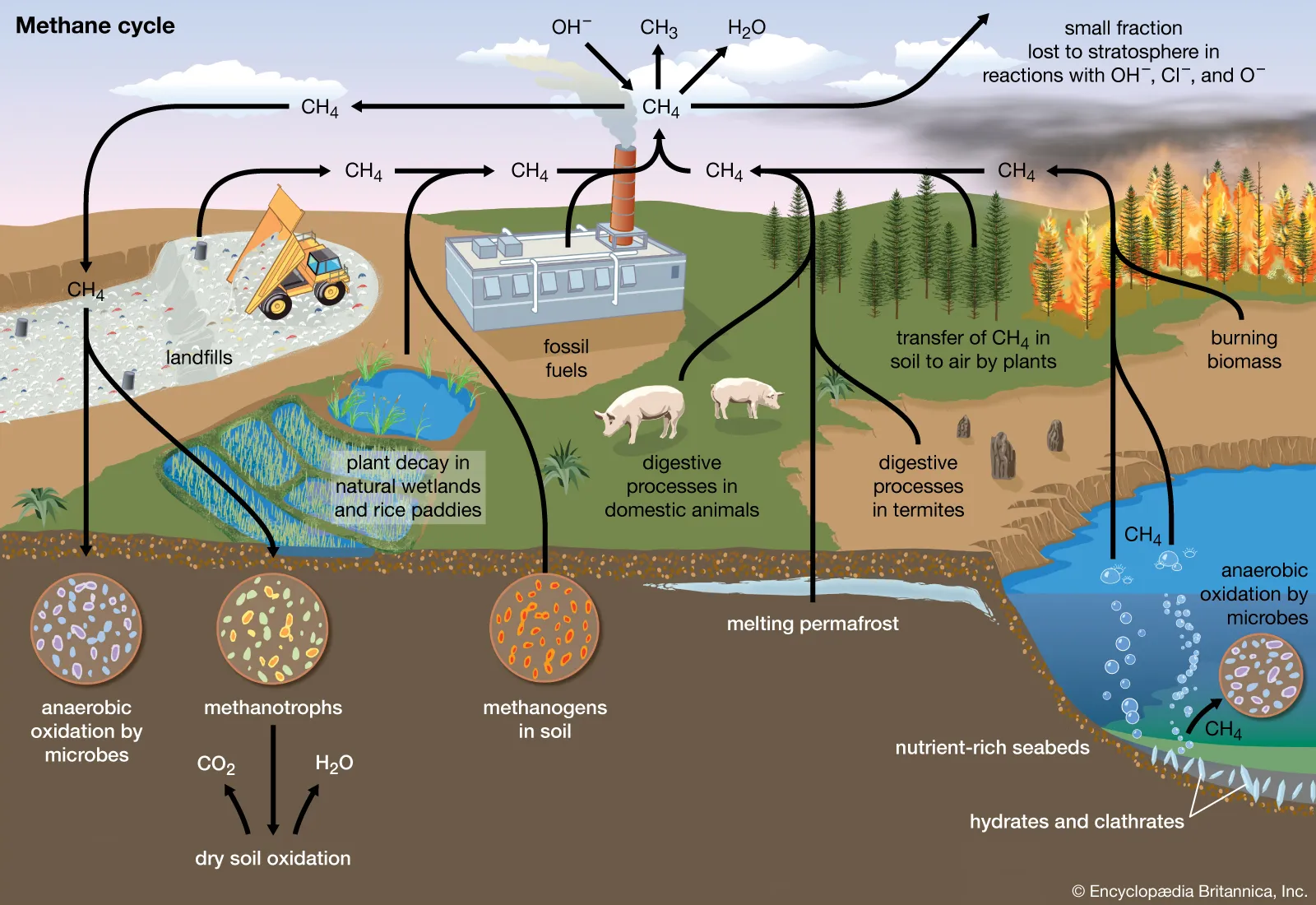Greenhouse gases fall into two main categories: natural greenhouse gases and industrial greenhouse gases.
Naturally occurring greenhouse gases are :
Water vapor, H2O: the most important greenhouse gas naturally present in the atmosphere, contributing around 60% of the greenhouse effect.
Carbon dioxide, CO2: produced by the natural decomposition of animal and plant matter, it is absorbed by plants during the photosynthesis process. This gas is also produced by human activities such as energy production, deforestation and certain industrial processes such as cement, iron and steel and petrochemicals. It is responsible for over 50% of the anthropogenic greenhouse effect, and its concentration has increased by over 47% since 1750.

Methane, CH4: produced by the decomposition of plant matter in a humid environment. More than half of total emissions come from human activities such as agriculture, waste treatment and the gas industry. It is responsible for just under 20% of the anthropogenic greenhouse effect, and its concentration has increased by more than 150% since 1750. Its global warming potential, measured by reference to that of carbon dioxide, is 25 times greater than that of CO2.
Nitrous oxide, N2O: produced by human activities such as agriculture, the chemical industry, domestic heating and transport. It is responsible for around 6% of the anthropogenic greenhouse effect, and its concentration has risen by more than 16% since 1750. Its global warming potential is 298 times greater than that of CO2.
Ozone, O3: naturally present in the stratosphere, it protects against the Sun’s ultraviolet rays. Stratospheric ozone can be destroyed by certain greenhouse gases. Ozone is also created in the troposphere, the lowest layer of the atmosphere, and when certain atmospheric conditions are met, this ozone will reinforce the greenhouse effect.
The most important greenhouse gases of industrial origin are :
Chlorofluorocarbons, CFCs, and hydrochlorofluorocarbons, HCFCs: these two types of gas have been restricted and banned under the Montreal Protocol since 1989, due to their impact on the ozone layer. They are used in cooling systems, fire extinguishers, solvents and foam production. Their global warming potential is between 771 and 7,380 times greater than that of CO2.
Hydrofluorocarbons, HFCs, and perfluorocarbons, PFCs: these gases are covered by the Kyoto Protocol signed in 1997 to reduce their use. HFCs continue to be used and have gradually replaced CFCs and HCFCs. These two gases do not directly attack the ozone layer, but their global warming potential is up to 14,800 times greater than that of CO2.
Sulfur hexafluoride, SF6: used notably in transformers and double-glazing. It has a very high infrared absorption capacity, and its global warming potential is around 23,900 times greater than that of CO2.
Nitrogen trifluoride, NF3: a colourless, odourless, non-flammable but toxic gas, it is used in particular as an industrial degreaser and in the composition of LCD screens and photovoltaic cells. Its use is steadily increasing, replacing SF6 for example, and its impact is considered to be underestimated, particularly in view of its global warming potential, which is some 17,200 times greater than that of CO2.
Carbon tetrafluoride, CF4: this is the most widespread perfluorocarbon in the atmosphere, used in particular as a refrigerant and in the composition of semiconductors and aerosol cans. Its global warming potential is estimated to be 6,500 times greater than that of CO2.




Comment here